 Previous Article
Previous Article
How Stain-Resistant is Composite Decking? An Engineer's Guide
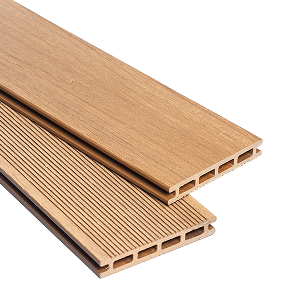
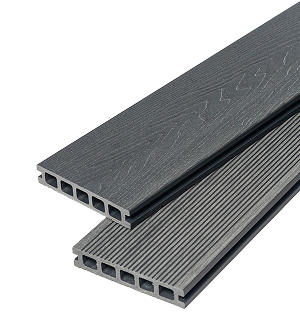
It’s one of the biggest questions we get asked, especially with our notoriously damp UK weather: “Is composite decking waterproof?” Let’s be clear from the start. If “waterproof” means a material is completely impervious to water, then by that strict definition, the answer is no. Composite decking is more accurately described as highly water-resistant. Because it contains natural wood fibres, every board will interact with moisture on some level—this is a normal and expected characteristic.
A truly water-resistant deck project involves two key areas: the performance of the boards themselves, and the protection of the subframe underneath. In this expert guide, we’ll cover both, so you know exactly how to build a deck that will last for decades.
The secret to composite decking’s excellent performance in the wet lies in its material science. Modern boards come in two main types with different levels of water resistance.
Think of this as the original recipe. These boards have a core of mixed wood fibres and recycled plastics. Because some wood fibres are on the surface, they can absorb a small amount of moisture, but the plastic in the blend makes them far more resistant to rot than traditional timber.
This is the modern solution. These boards have the same composite core but are wrapped in a non-porous polymer shell or “cap”. This protective shield makes the board almost completely immune to moisture absorption and provides superior stain resistance.
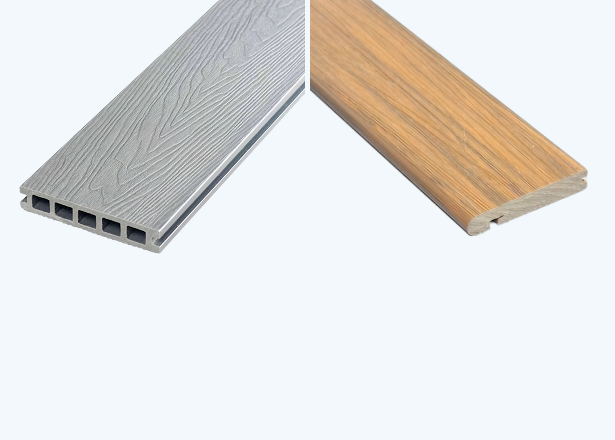
But what does “a small amount” of swelling actually mean? We took it to the lab to find out. Our tests on boards submerged for 28 days show that a typical board might swell around 1.36% in thickness, but only a negligible 0.09% in width.
This tiny movement happens because the wood fibres expand with moisture. The reason it isn’t a problem unlike with timber is that the plastic matrix holds everything together, limiting the swell and preventing the rot that destroys a wooden deck. The boards remain structurally sound and return to their original size as they dry.
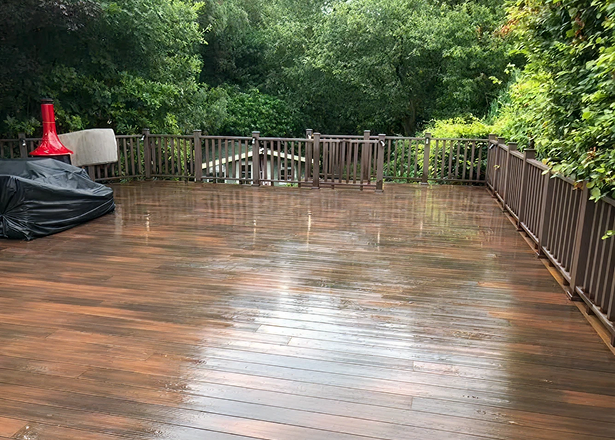
When installing decking near a constant source of water, the board’s core also becomes a factor. In some cases, hollow boards can trap moisture. For these poolside applications, a solid core board provides the ultimate peace of mind.

A water-resistant deck surface is only half the story. Protecting your subframe is absolutely critical for a long-lasting and safe installation. Here are the best methods to achieve this.
No matter what else you do, this is the one step you should never skip for a timber subframe. Simply apply a self-adhesive joist protection tape (DPC tape) to the top edge of every joist. This affordable membrane seals vulnerable screw holes and stops water from sitting directly on the wood, dramatically prolonging its life.
Expert Tip for a Professional Finish: For an enhanced level of protection and a superior aesthetic, many professional fitters also paint their joists. You can learn all about this pro-technique in our complete guide to painting decking joists.
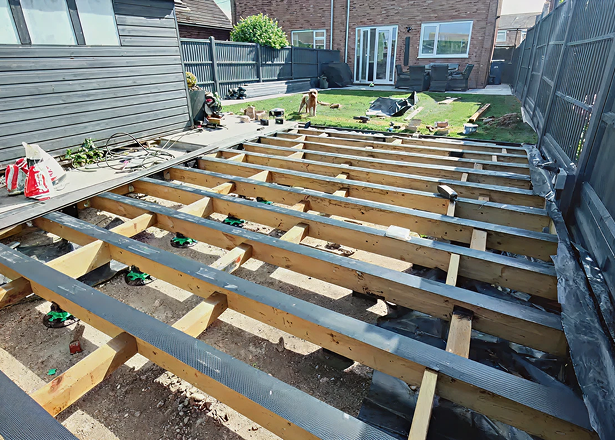
If you want to use the space under a raised deck for storage, you’ll need a more comprehensive system to catch and divert rainwater.
These flexible rubber strips fit into the gaps between boards, creating a waterproof seal and channelling water away.
These systems are installed beneath the joists (like a ceiling) to catch any water that drips through and funnel it into a gutter. Be aware that these can sometimes become clogged with debris over time.

The most effective, “fit-and-forget” way to guarantee a rot-proof foundation is to build it from a waterproof material from the start. Composite or aluminium joists will not rot from moisture damage. While the upfront cost is higher, they eliminate the need for any other waterproofing systems and offer superior long-term value.
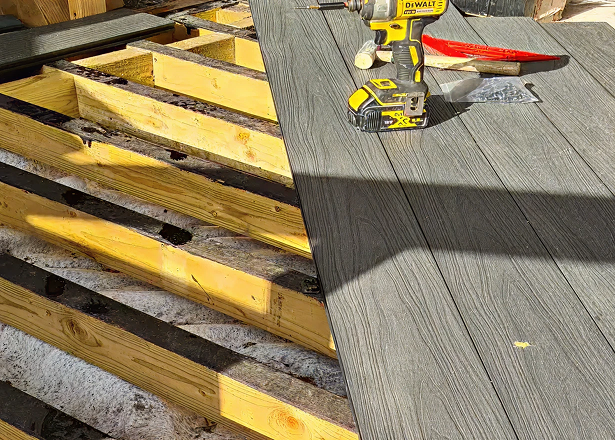
A truly water-resistant deck is a two-part system. For the surface, a second-generation capped board offers the best protection against moisture. For the foundation, at a minimum, you must protect your timber joists with joist tape, or for the ultimate peace of mind, build with composite joists from the start.
By considering both the deck surface and the subframe, you can create a beautiful, high-performance outdoor space that will last for decades, even in the damp UK climate.
 Previous Article
Previous Article
How Stain-Resistant is Composite Decking? An Engineer's Guide

The Pros and Cons of Composite Decking: A UK Expert's Guide (2025)